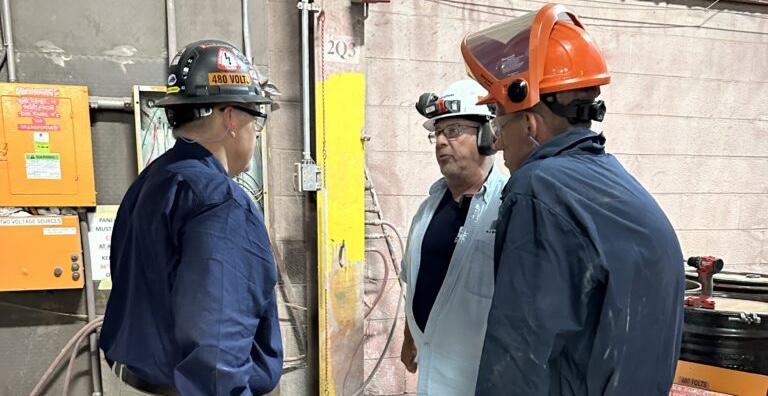With the 2025 compliance deadline looming, facility operators are realizing that the documentation of their Electrical Maintenance Program (EMP) won’t be enough to meet NFPA 70B’s newly enforceable expectations. The reality? Regulators now require proof of proactive risk identification and mitigation strategies. That’s where thermal imaging—often overlooked, but now essential—steps in as the linchpin for not only identifying issues, but also achieving audit-ready, true compliance.
Why This Year is Different for EMP Compliance
NFPA 70B is no longer a best-practice recommendation—it’s a standard with teeth. Enforcement is sharper: OSHA, insurance underwriters, and local authorities are auditing more rigorously, and documentation lapses, overdue tasks, or missed inspections translate quickly into fines and liability. Facility managers across manufacturing, healthcare, data centers, and other sectors face mounting challenges:
- Overdue maintenance tasks and incomplete records
- Uncertain equipment condition ratings
- Staff certification gaps
- Pressure to minimize downtime and maintenance costs
The Hidden Risks: Why Visual Inspection Isn’t Enough
Relying on traditional methods—visual checks, scheduled routine maintenance—misses what’s behind panels or inside gear. Studies by the Electrical Safety Foundation International (ESFI) reveal that roughly 30% of critical electrical faults are not visible until catastrophic failure. These include thermal hotspots, loose connections, and overloaded circuits, all of which can:
- Disable production lines or critical hospital equipment
- Trigger costly insurance claims or even OSHA investigations
- Cause unplanned outages in data centers, risking compliance for your own clients
Thermal imaging exposes these hidden threats in real time, without shutting down operations.
How Thermal Imaging Powers a Compliance-Driven EMP Audit
When integrated with a systematic EMP audit, thermal imaging provides a multi-layered approach to compliance:
- Comprehensive Baseline Assessments
- Document baseline temperatures and equipment condition ratings for all panels, switchgear, transformers, distribution systems, and MCCs.
- Non-Disruptive Preventive Maintenance
- Schedule scans during operational hours—avoiding costly downtime or after-hours premiums.
- Evidence-Driven Reporting
- Generate timestamped images, annotated condition reports, and action item lists to meet NFPA 70B documentation and OSHA inspection requirements.
- Continuous Qualification Records
- Demonstrate that inspections are handled by certified thermographers, meeting staff qualification clauses in the standard.
Practical Steps: Auditing Your EMP for True NFPA 70B Readiness
- Review Your EMP Documentation
- Confirm asset lists, maintenance intervals, and last inspection dates are current.
- Schedule a Thermal Imaging Assessment
- Partner with a certified provider (like Louisville IR) for an enterprise-wide scan.
- Compare Thermal Findings with EMP Maintenance Logs
- Identify overdue inspections, unlogged repairs, or newly-emerged risks.
- Update Condition Ratings and Action Plans
- Set risk-prioritized maintenance tasks, using scan results to allocate resources efficiently.
- Train and Qualify Maintenance Staff
- Ensure all personnel responsible for electrical inspections have up-to-date credentials.
- Maintain Audit-Ready Documentation
- Store annotated thermal images, intervention logs, and compliance checklists in a centralized, accessible system.
Avoiding the Pitfalls: Common EMP Audit Failures (and How to Prevent Them)
- Missed inspection intervals: Automated scheduling and reminders tied to EMP software.
- Incomplete evidence: Supplement written logs with high-resolution thermal images, signed by a certified thermographer.
- Lack of risk prioritization: Use temperature severity grading to focus resources where failure impact is greatest.
- Outdated staff training/certification: Track expiration dates and schedule recurring training, especially for high-turnover teams.
Expert Insight from Jack McNear, Louisville IR:
“Every major insurance carrier and OSHA inspector we talk to is looking for more than a checklist—they want to see real data and actionable evidence. Thermal imaging is the quickest, least disruptive way to prove you’re ahead of the curve, not chasing yesterday’s problems.”
Compliance Checklist: Is Your EMP Audit-Ready?
- [ ] Comprehensive inventory of electrical assets and maintenance intervals
- [ ] Thermal scans performed and documented by a certified thermographer
- [ ] Baseline readings and comparison to manufacturer specs
- [ ] Prioritized list of abnormal findings and corrective actions
- [ ] Up-to-date EMP documentation accessible for auditors
- [ ] Active staff training and qualification records
- [ ] Evidence of remedial actions taken on previous findings
The Bottom Line: Thermal Imaging as Your EMP Compliance Cornerstone
Going beyond NFPA 70B’s documentation requirements isn’t just about avoiding fines. Reliable, non-invasive technologies like thermal imaging mean you’re protecting people, minimizing unplanned costs, and future-proofing your facility operations.
Ready to see what you’ve been missing? Schedule a compliance-driven thermal imaging assessment with Louisville IR and make your EMP audit not just pass, but excel.

